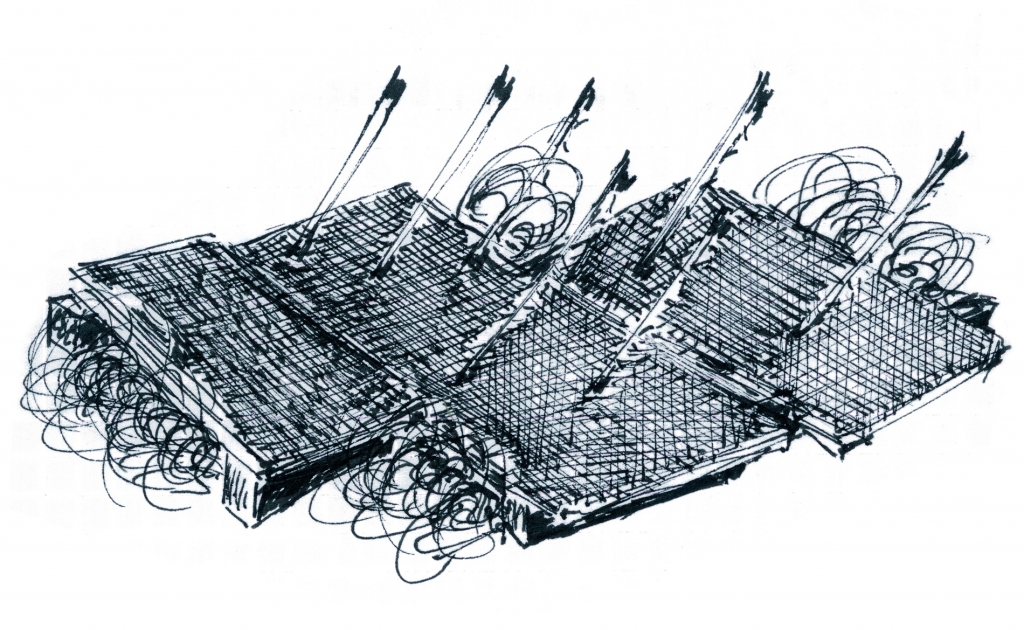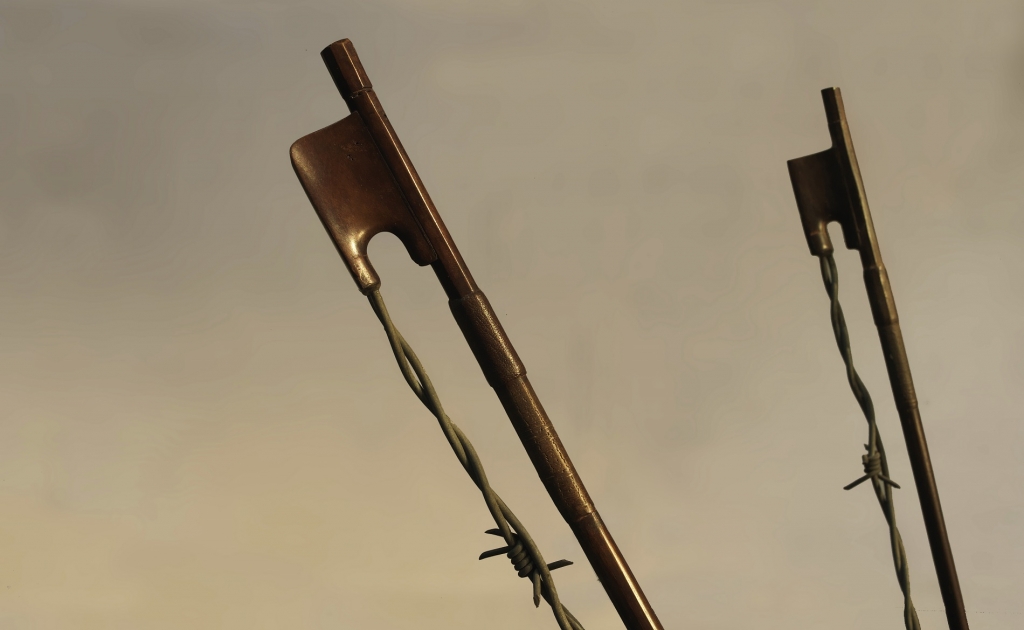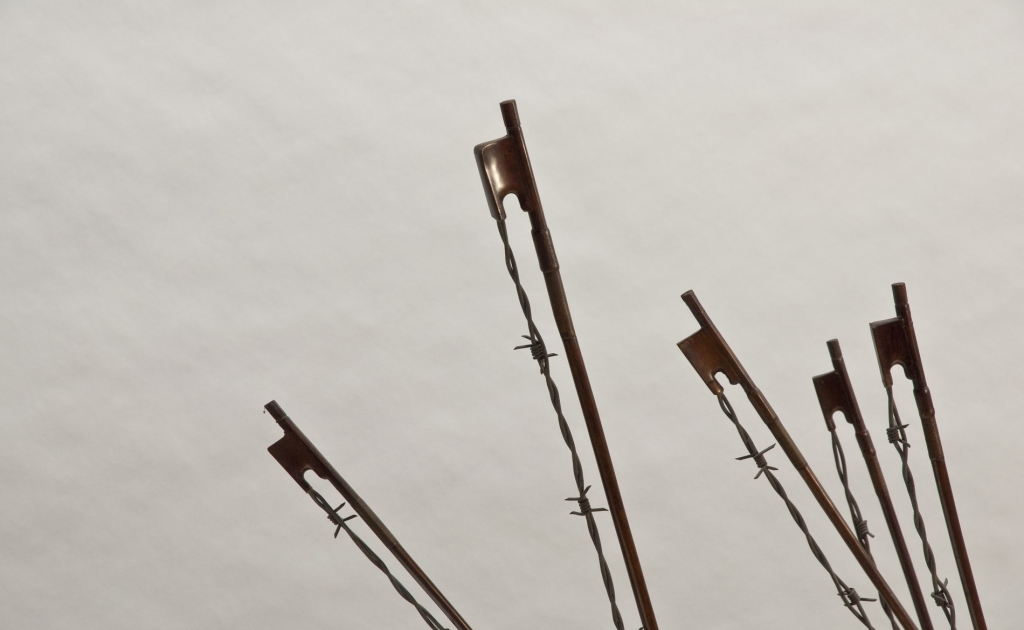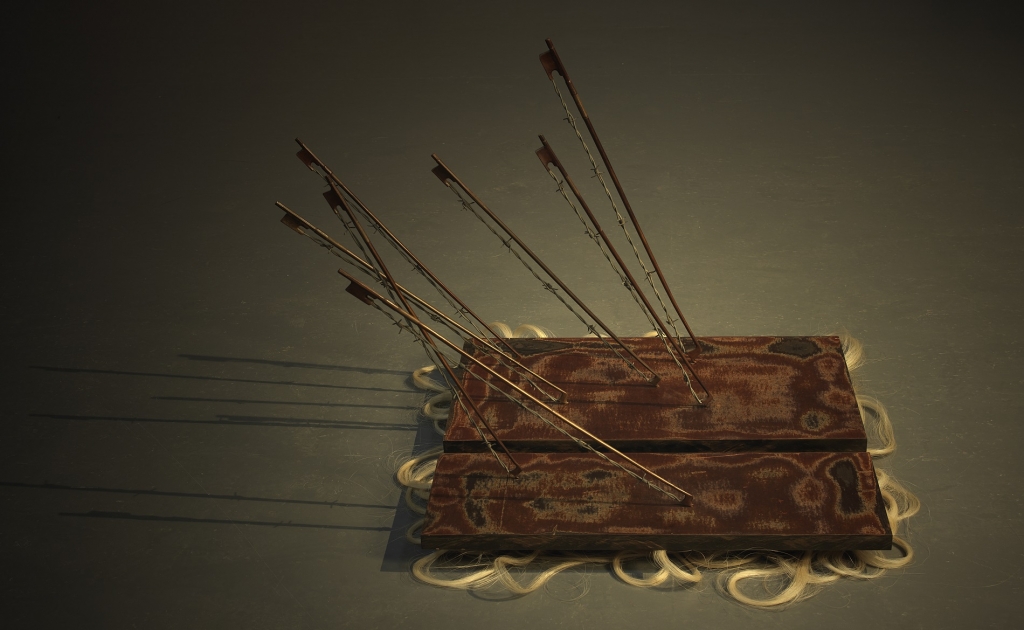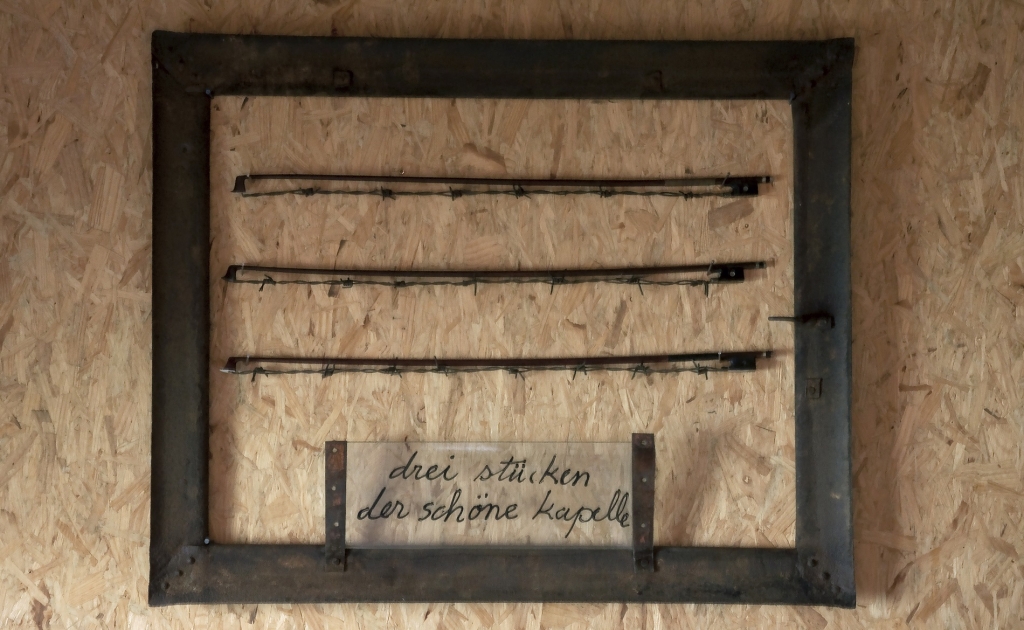Back to the other sculptures & installations >
ORCHESTRA PIECES
Three, five, seven pieces by the Bel Orchestre
Drei, fünf und sieben Stücke der Schönen Kapelle.
Bronze, iron, bakelite, male horsehair.
…When the clouds look like Stradivari then expect the rain to make sweet music.
The Iraq-Kuwait war was beginning, we had arrived at Auschwitz on the day the “Desert Storm” counter-attack was launched by the Allied command.
At dawn on this day of 17 January 1991, the temperature is minus twenty degrees.
Forty-six years earlier, day for day, 66,900 deportees attended the last general call, 31,800 at Auschwitz I and II and 35,100 in the auxiliary camps of Monowitz.
We pass through the gate. Near the middle of the “ramp” the fog was so thick that sounds were muffled, as was the dog guarding the Carmelite garden in the camp. Later we gave it a chewing gum so that it would stop barking.
The unspeakable horror, free of animal presence, everything corresponded to what we had read, seen and heard. Free of animals? Not quite, as just a few meters ahead of us, a family of deer calmly crossed our path.
What is there to know? That the camp commander loved music and would select musicians as they got off the train on the ramp, that they were then admitted into the camp orchestra, the Schöne Kapelle. The musicians played to mark the start and end of the working day, for executions, to celebrate the capture of escapees, for the birthdays of SS officers and other occasions. It is said that the commander was crying as he looked down from his balcony at his beautiful orchestra leaving, a few days before the camp was liberated by Russian troops, on 27 January 1945 at three o’clock in the afternoon.
At the Königsbronn Memorial, a zither is on display. It belonged to Georg Elser, a cabinetmaker and clockmaker, shot at Dachau on April 9, 1945 because on 8 November 1939, he had organised the failed attempt on Hitler’s life in the Burgerbräu brewery where the Führer liked to celebrate his 1923 putsch every year.
The bomb exploded only a few minutes after the latter’s departure. Elser was arrested (in Konstanz) that very night, interned in the Sachsenhausen camp and subsequently at Dachau, where he was shot on 9 April 1945 on Hitler’s special order. His zither was donated by his brother Leonard to the Königsbronn Memorial in Elser’s hometown (Hermaringen).


